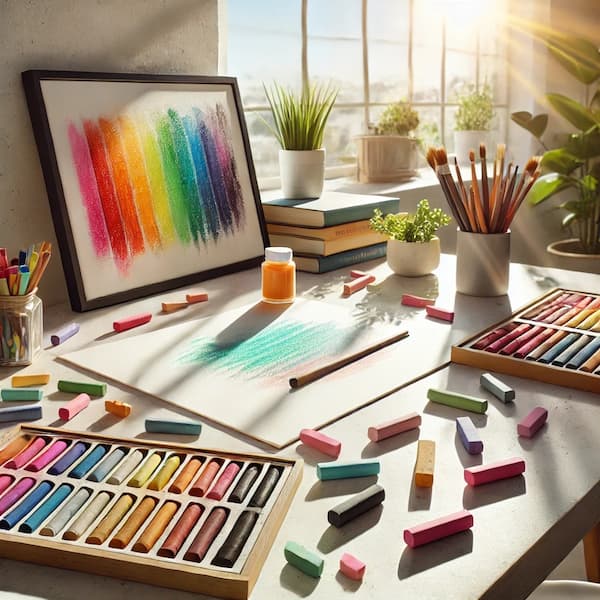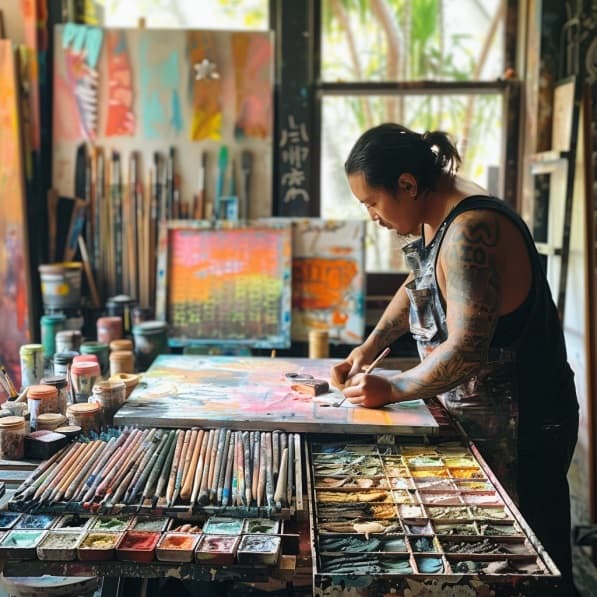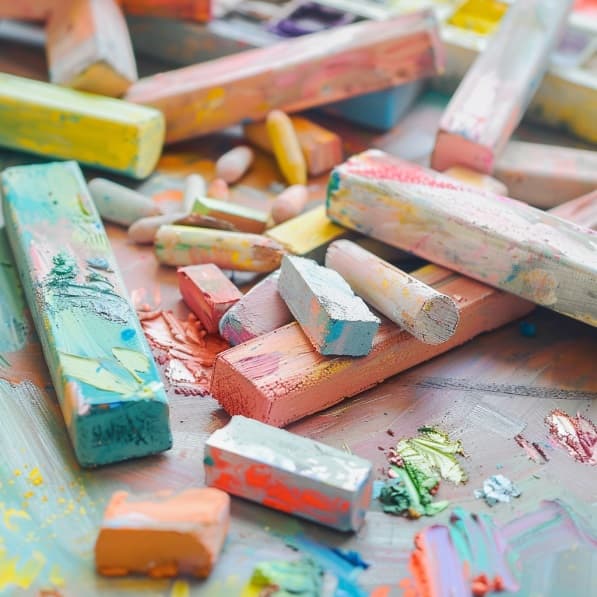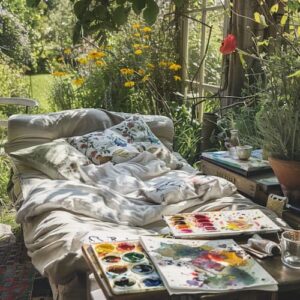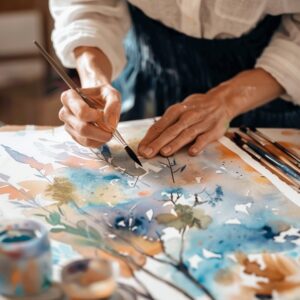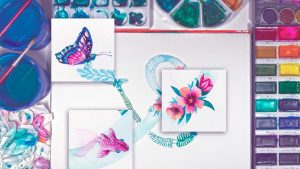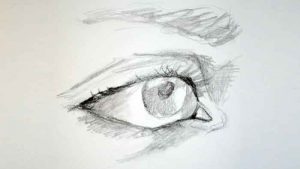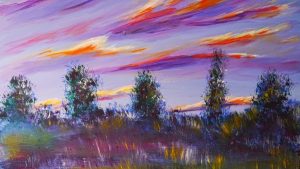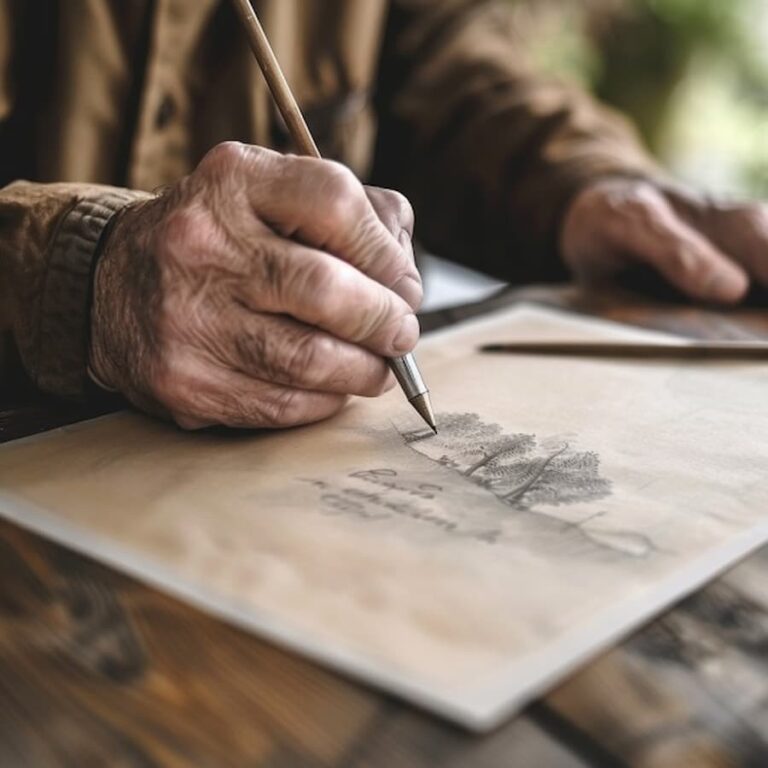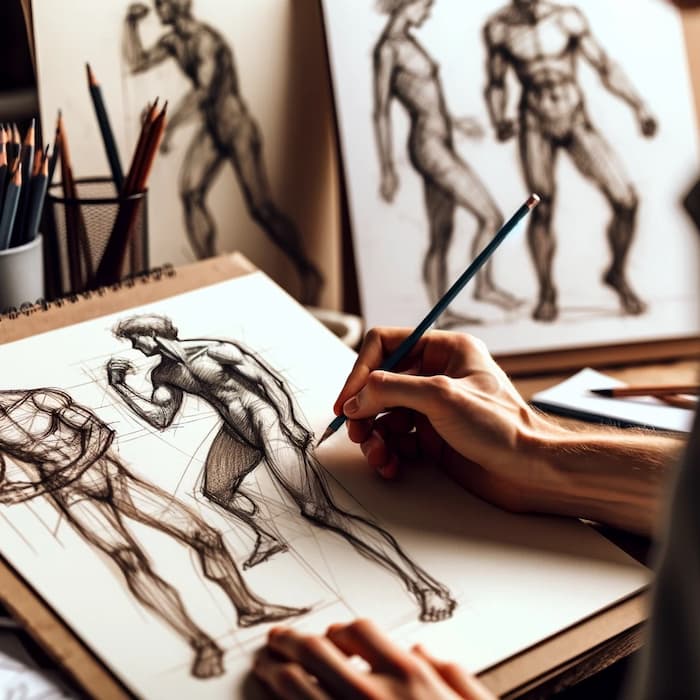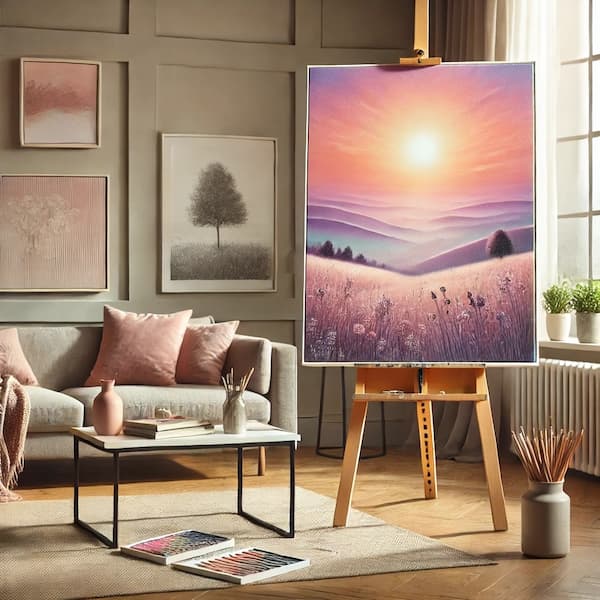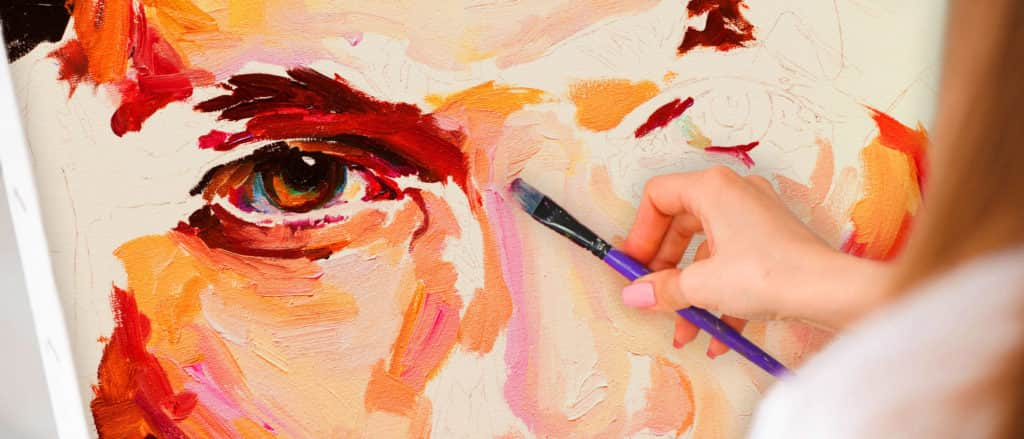Pastel painting is one of the most versatile and expressive artistic techniques.
In this article, we will explore the basics of pastel painting, from the choice of materials to the essential techniques for mastering this art.
Introduction to Pastel Painting
Pastels, known for their vibrant range of colors and textures, offer a unique experience for artists.
Unlike other mediums such as oil or watercolor, pastel combines the qualities of drawing and painting in a compact and accessible form.
But what makes pastel so special?
What are Pasteles?
Pastels are sticks of dry pigment that are mixed with a binder to hold their shape.
There are three main types of pastels:
- Dry Pastels: Include soft and hard pastels.
They are ideal for a wide range of techniques due to their ability to blend and blend easily. - Oil Pastels: Contain oils that give them a creamy texture.
They are perfect for thicker and layered effects. - Pastels in Bars: Combine characteristics of dry pastels and oil pastels, offering a balance between fluidity and texture.
Basic Principles of Pastel Painting
The first step in painting with pastels is to understand how the different types of pastels work and how they can be applied to various surfaces.
Materials Needed and Choice of Cakes
- Soft Pastels: They offer a wide variety of vibrant colors and are easy to blend.
However, their soft texture can be a challenge for beginners. - Hard Pastels: They are ideal for details and fine lines due to their firmer consistency.
- Oil Pastels: Provide a more robust finish and are excellent for layering and texturing.
Papers and Supports
The choice of paper is crucial to the success of a pastel painting.
Textured papers allow for better pigment adhesion.
Some of the most recommended include:
- Canson Mi-Teintes paper: Popular for its texture and variety of colors.
- Sand Paper: Offers a rougher texture, ideal for retaining several layers of cake.
- Pastelmat paper: Combines smoothness and texture, providing a unique surface to work on.
Other Materials
- Fixative: Used to fix the pastel and prevent stains.
- Diffusers or Tortillones: Tools for blurring and mixing colors.
- Gloves and Mask: To protect from cake dust.
Pastel Painting Techniques
Once you have your materials, it’s time to explore basic pastel painting techniques.
- Blurring Technique: Blurring is essential for creating smooth transitions and gradient effects.
You can blend with your fingers, a soft cloth, or a blender.
The key is to apply the pastel in light layers and blend to the desired softness. - Layering: The layering technique allows for depth and texture.
Start with lighter colors and work toward darker colors, applying each layer gently to avoid saturating the paper. - Texture Effects: To create texture, you can use techniques such as scratching or rubbing.
Scratching involves scraping off the top layer of pastel to reveal the color underneath.
Rubbing uses tools such as stiff brushes or spatulas to create patterns on the surface. - Color Blending: Color blending in pastels can be achieved in several ways.
One of the most common is to overlap layers of different colors and blend them.
You can also mix directly on the palette before applying to the paper.
Care and Conservation
Caring for your paints and materials is crucial to maintain their quality over time.
- Fixing the Work: Applying a fixative at the end of your work helps protect the pastel from smudging and wear.
Use spray fixatives in a well-ventilated area and with light coats to prevent colors from bleeding. - Storage: Store your paints in protective folders or frames with glass to avoid direct contact with the surface.
Upright storage is ideal to prevent pastel dust from accumulating. - Material Maintenance: Keep your cakes organized and clean.
You can use a box with compartments and a soft cloth to wipe off dust residue.
Tips and Tricks for Beginners
-Practice Light Hand
Light pressure when applying the pastel allows for smoother layers and better blending possibilities.
Avoid pressing too hard, as this can saturate the paper and make correction difficult.
-Experiment with Textures
Don’t limit yourself to using only your fingers to blend.
Try different tools such as brushes, sponges, and blenders to see how they affect the texture and appearance of the cake.
-Use Color Strategically
Choose complementary colors to create contrast and analogous colors for smooth transitions.
Experiment with color combinations to discover new palettes.
-Learn from the Masters
Look at works by well-known artists who use pastel for inspiration and to learn new techniques.
Looking at how they handle light, color, and texture can offer valuable insights.
-Keep your work area clean.
Cake dust can be harmful if inhaled in large quantities.
Be sure to work in a well-ventilated area and regularly clean your workspace.
Pastel painting offers an exciting opportunity to explore color and texture in a direct and tactile way.
With these basic principles, you’ll be well on your way to mastering this technique and creating vibrant, dynamic works of art.
To learn how to work with pastels like a real professional, knowing all its characteristics, use of materials and how to get the most out of this technique, visit our Painting Course with Lifetime Access + Workshops.
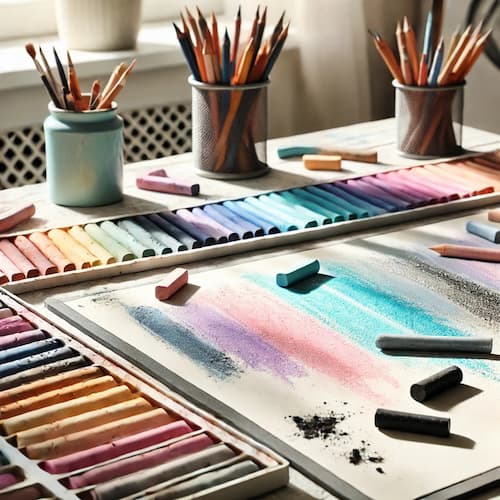
¿Qué es el Carboncillo y Pastel?
Definición del Carboncillo y Pastel
El carboncillo es uno de los materiales de dibujo más antiguos, compuesto por ramas de madera carbonizada. Este medio permite crear líneas suaves o intensas y se puede manipular fácilmente para lograr diversos efectos, desde sombras profundas hasta trazos delicados.
El pastel, por su parte, es un medio de dibujo y pintura hecho de pigmentos en polvo mezclados con un aglutinante suave. Se presenta en diferentes formas: pastel seco, pastel blando y pastel al óleo, cada uno con características particulares que permiten una amplia gama de colores y efectos texturales.
Características principales del Carboncillo y Pastel
El carboncillo es conocido por:
- Su facilidad para esparcirse sobre el papel.
- La posibilidad de crear altos contrastes entre luces y sombras.
- Su capacidad para corregirse y manipularse fácilmente.
El pastel, en cambio, destaca por:
- La viveza de sus colores.
- La capacidad de mezclar tonos directamente en el papel.
- La textura rica que ofrece en superficies adecuadas, como papeles rugosos.
Diferencias clave entre el Carboncillo y Pastel
Aunque ambos medios pueden combinarse en una obra de arte, existen diferencias clave:
- Carboncillo: Ideal para bocetos y obras monocromáticas o de alto contraste.
- Pastel: Mejor para agregar color y crear gradaciones sutiles o vibrantes en la obra.
Técnicas Básicas para Trabajar con Carboncillo y Pastel
Usando el Carboncillo en tus Creaciones
El carboncillo se utiliza con una técnica muy intuitiva, que permite trazos rápidos y sucios al principio, para luego refinar el trabajo. A continuación, algunos pasos básicos para comenzar con el carboncillo:
- Elegir el tipo de carboncillo: Puedes utilizar carboncillo en barra o en lápiz, dependiendo del detalle que quieras lograr.
- Preparar la superficie: Se recomienda utilizar papeles de grano grueso o mediano para retener mejor las partículas del carboncillo.
- Sombreado y difuminado: Una de las técnicas más comunes es el uso del difuminado con los dedos o con herramientas específicas para suavizar las líneas.
Consejos prácticos para trabajar con Carboncillo
- Fijación: Utiliza un fijador para evitar que el dibujo se borre accidentalmente.
- Cuidado con las manos: Al trabajar con carboncillo, es fácil ensuciar la obra, así que ten cuidado de no arrastrar las partículas de carboncillo con la mano.
Técnicas para Trabajar con Pastel
El pastel permite una expresión artística vibrante gracias a su amplia gama de colores. Aquí algunos pasos para iniciarte en esta técnica:
- Pastel seco o pastel al óleo: Elige el tipo de pastel que mejor se adapte a tu estilo. El pastel seco permite mezclar tonos directamente en el papel, mientras que el pastel al óleo ofrece una textura cremosa y densa.
- Capas de color: Con el pastel, se trabaja en capas. Primero se establecen los colores base, y luego se añaden detalles y matices.
- Uso de fijadores: Como con el carboncillo, los fijadores son esenciales para proteger la obra final.
Trucos para una mejor aplicación de Pastel
- Elige un buen papel: Para el pastel, se recomienda usar papeles de alta gramatura o texturizados, que permitan que el pigmento se adhiera mejor.
- Trabaja con capas ligeras: Es mejor comenzar con capas suaves de color e ir aumentando la intensidad gradualmente.
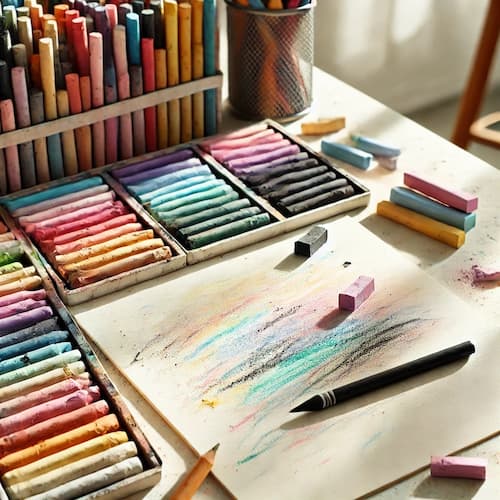
Cómo Combinar Carboncillo y Pastel
La Fusión Perfecta del Carboncillo y Pastel
Uno de los aspectos más interesantes de estos medios es la posibilidad de combinarlos. Al mezclar carboncillo y pastel, puedes aprovechar lo mejor de ambos: el contraste del carboncillo y los colores vibrantes del pastel. Para lograr una combinación efectiva:
- Inicia con carboncillo: Usa el carboncillo para establecer el boceto inicial y las áreas de sombra.
- Añade color con pastel: Usa el pastel para añadir color a las áreas destacadas, logrando un equilibrio entre las sombras y los tonos vivos.
- Difuminado estratégico: Mientras que el carboncillo se puede difuminar para suavizar sombras, el pastel te permite mezclar colores de forma gradual.
Beneficios de combinar Carboncillo y Pastel
- Profundidad y textura: La unión de ambos medios aporta riqueza y profundidad a las obras.
- Versatilidad en el estilo: Puedes trabajar tanto de manera detallada como más abstracta, con diferentes niveles de acabado.
Ejemplos de obras con Carboncillo y Pastel
Algunos de los artistas más renombrados han combinado estas técnicas para crear obras impactantes, donde el uso del carboncillo y pastel aporta una variedad única de efectos visuales.
Recomendaciones para el Cuidado y Conservación de Obras con Carboncillo y Pastel
Cómo preservar tus obras de Carboncillo y Pastel
Al ser técnicas con partículas sueltas, es fundamental tener ciertos cuidados para preservar tus obras:
- Fijadores profesionales: Utiliza un fijador específico para carboncillo y pastel para evitar que se difuminen con el tiempo.
- Marco con cristal: Almacenar tu obra en un marco con cristal es ideal para protegerla del polvo y la humedad.
- Almacenaje adecuado: Si no enmarcas la obra, guarda el dibujo entre papeles libres de ácido para evitar que se manche o deteriore.
Para aprender a trabajar con pastel como un auténtico profesional, conociendo todas sus características, uso de materiales y cómo sacarle el máximo partido a esta técnica, visita nuestro Curso de Pintura con Acceso Vitalicio + Talleres.

